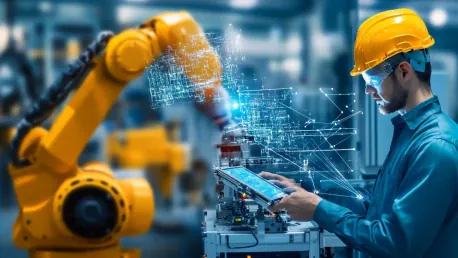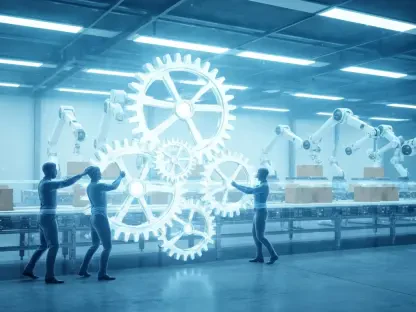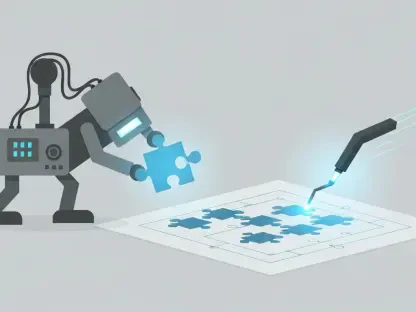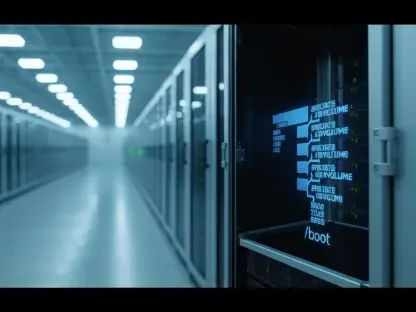The manufacturing industry is undergoing a significant transformation driven by the integration of AI-powered collaboration software. As advanced technologies reshape the manufacturing sector, these collaborative tools are proving instrumental in enhancing human capabilities and driving productivity, creativity, and innovation. By leveraging artificial intelligence, manufacturing teams can focus on high-impact tasks while automating repetitive activities. This shift towards automation and AI integration ultimately leads to more efficient and effective operations, positioning companies to stay competitive in an ever-evolving market.
The Role of AI in Modern Manufacturing
AI and automation technologies have become essential components in modern manufacturing, revolutionizing every stage of the product lifecycle—from initial design and development to production and quality control. These advancements are not intended to replace human workers but to augment their efforts, creating a harmonious balance between human expertise and machine efficiency. Instead of being bogged down by repetitive and mundane tasks, specialists can now dedicate their skills and creativity to strategic tasks that drive the company’s growth and success. The integration of AI ensures that human talent is utilized where it adds the most value, fostering an environment of continuous improvement and innovation.
Manufacturing processes benefit significantly from AI’s capabilities, such as predictive maintenance, real-time quality monitoring, and intelligent supply chain management. Predictive maintenance allows machines to signal potential issues before they result in downtime, ensuring smoother operations and reducing unexpected interruptions. Real-time quality monitoring ensures that products meet stringent standards, minimizing defects and waste. Additionally, intelligent supply chain management optimizes logistics and inventory, reducing costs and improving delivery times. As these AI-driven processes become integral to manufacturing, they pave the way for a new era of efficiency and excellence.
Collaborative Work Management Platforms
One of the standout AI-powered tools in this space is Wrike, a leading work management platform embraced by prominent manufacturing companies such as Electrolux, L’Oréal, and Siemens. Wrike’s comprehensive suite of features streamlines workflows and enhances team connectivity, making it an invaluable asset in the manufacturing industry. Custom workflows ensure that product development processes are expedited, while automated resource management and issue scanning help allocate resources efficiently and address potential problems before they escalate. Detailed dashboards provide enhanced visibility into project progress, allowing teams to monitor and adjust their efforts in real-time.
Wrike’s powerful AI and automation tools significantly reduce manual errors and optimize everyday tasks, enabling teams to focus on high-impact activities that drive real revenue. Tested templates offer standardized approaches to common tasks, while live data-based automatic reporting ensures that teams stay informed with the most accurate and up-to-date information. The platform’s ability to seamlessly integrate with multiple third-party apps further enhances its versatility, making it a central hub for various aspects of manufacturing operations. By unifying people, processes, and product data, Wrike ensures that manufacturing teams operate with maximum efficiency and effectiveness.
Enhancing Communication with AI
Effective communication is crucial in the manufacturing sector, and AI-powered tools like Zoom, alongside platforms from Google, Microsoft, and Slack, are making significant strides in this area. These tools incorporate AI features such as transcription, closed captions, meeting summarization, real-time translation, and engagement analysis. By automating administrative tasks, these AI-enhanced platforms allow users to concentrate on strategic discussions and decision-making. The result is faster task completion, improved productivity, and higher quality of work. Research by Zoom indicates that the utilization of AI in leadership roles significantly boosts efficiency and effectiveness in team collaborations.
The integration of AI-powered communication tools with collaborative work management platforms like Wrike further maximizes their effectiveness. Seamless integration allows for real-time updates and ensures that communication remains clear and accessible to all team members. AI features like engagement and attendance analytics provide valuable insights into team dynamics and areas for improvement. The ability to summarize meetings and provide real-time translations ensures that all participants are on the same page, regardless of language barriers. These advancements not only enhance day-to-day communication but also contribute to building a cohesive and productive work environment.
Visual Collaboration and Ideation
Visual collaboration platforms such as Klaxoon have redefined traditional ideation methods, transforming them into sophisticated digital canvases that enhance creative processes in manufacturing. These tools are particularly valued by teams involved in planning, designing, and brainstorming sessions, as they offer a shared, cloud-based environment for collaboration. Features such as simplified and summarized board content, automatic action plan generation, idea grouping, and text translation reduce administrative burdens, allowing team members to focus on innovative thinking and problem-solving. This streamlined approach to ideation results in the development of cutting-edge products that provide a competitive advantage in the marketplace.
By leveraging digital canvases, manufacturing teams can visualize concepts, iterate designs, and collaboratively refine ideas with ease. The ability to group ideas by topics and automatically generate action plans ensures that discussions lead to actionable outcomes. Text translation features facilitate inclusive participation in diverse teams, fostering a collaborative culture that values different perspectives. As teams engage in visual collaboration, they harness their collective creativity to develop products that stand out in the market. This approach not only enhances efficiency but also drives the innovation necessary to thrive in a competitive landscape.
Strategic Consolidation of Collaborative Tools
The manufacturing industry is experiencing a major transformation driven by the integration of AI-powered collaboration software. Advanced technologies are reshaping the sector, and these collaborative tools are proving essential in boosting human capabilities and driving up productivity, creativity, and innovation. Leveraging artificial intelligence allows manufacturing teams to concentrate on high-impact tasks while automating repetitive activities. This shift towards automation and AI integration results in more efficient and effective operations. Companies, therefore, can maintain competitive edges in an ever-evolving market. Adopting AI in manufacturing isn’t just about improving productivity; it’s also about innovation and the potential to explore new business opportunities and solutions. As companies implement these advanced tools, they position themselves for sustained growth and the ability to adapt to future changes in the industry landscape. AI-powered collaboration software is thus a critical driver in the ongoing evolution of the manufacturing industry.









